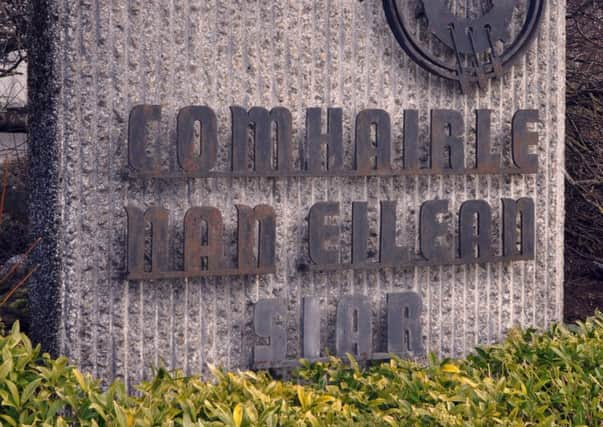Scales of representation are firmly tipped in one direction


With only just over a handful of female candidates standing in the local elections on May 4th amongst a sea of male hopefuls the odds were stacked against the women aiming to gain enough support from the electorate.
This lack of female participation in local politics is not unique to the Western Isles, across Scotland local authorities struggle to attract participation by women, the reasons for which are unclear.
Advertisement
Hide AdAdvertisement
Hide AdFormer councillor Catherine MacDonald came close in ward 3 (Harris and South Lochs) but narrowly missed out. This ward also boasted the greatest number of female candidates, with four women out of the nine hopefuls campaigning for the three council seats. Catherine, who stood as an Independent, said: “It is a real pity no women have been elected.
“The women standing in the ward had strong connections to the area and spoke well, they would have made good councillors.
“I always thought the job was about helping people, they would come to me directly, and I would try and sort out whatever problems there were.
“Perhaps it would be easier for women to approach another woman in some areas such as a care issue.”
Advertisement
Hide AdAdvertisement
Hide AdBut whilst the main parties at a national level seem to be better at encouraging the participation of women - you only have to look to Scottish SNP leader and First Minister Nicola Sturgeon, Scottish Labour leader Kezia Dugdale and Scottish Conservative leader Ruth Davidson - in local politics the winning formula has been described as “male, pale and stale”.
Councils such as Midlothian seem to be getting something right with 7 women elected to an 18 member-strong chamber, but this seems to be more about luck than design as the council take no special measures to encourage better participation.
Gazette reader H. Mansfield wrote to the Gazette deploring the situation, stating: “I am nauseated by the local election of 100% males, and issues arising, such as the safety issues related to single gender monopoly of political office as evidenced by recent council elections.
“The Hebrides, pitched as a safe place to bring up children, has shown itself to be a place of strangulation of women’s voices and inclusion, by an unsatisfactory leadership, who, with only 3 women out of 31 Councillors at the last local election, had already been placed on the lowest rung of gender equity in local councils, the worst in Europe.
Advertisement
Hide AdAdvertisement
Hide Ad“The lack of change since then, seems self-serving rather than community-service oriented.”
The letter writer also suggested that funding to support equality was available and asked if the Council had taken advantage of this.
However Comhairle nan Eilean Siar answered that they were aware of no such funding, saying: “As far as we are aware there has been no specific money set aside for local authorities to invest in encouraging the participation of women or for inclusion.
“In the 20.3 million for communities annually for the last three years there has been no allocation of any of this funding to local authorities.
Advertisement
Hide AdAdvertisement
Hide Ad“This funding is primarily targeted towards the third sector and specific areas such as Violence against Women and Girls. It is therefore for the Scottish government to promote its programmes locally and nationally.”
Addressing another point within the letter they added: “While there may be proposals for public Boards, the Comhairle is not a Board and therefore is not included in this proposed legislation.”
A spokesperson for the local authority commented on the election: “There were only 6 out of 60 candidates that were female so it was unlikely that there would be many female members.
“Unfortunately none of the six were elected and that is far from ideal, resulting in no female representation for the first time ever on the Comhairle. It is however the result of democratic elections.”
Advertisement
Hide AdAdvertisement
Hide AdThis week an online commentator declared that education was all-important to remedy the situation.
He stated: “Bring local politics to the schools, bring the schools into the council chamber. These children are our future and have a place if shown at ground level.”
Education may be the best platform for change, now that 16 and 17 year olds are allowed to vote in local elections, perhaps greater political participation at this younger age will be a catalyst to change the “male, pale and stale” descripton in the future.